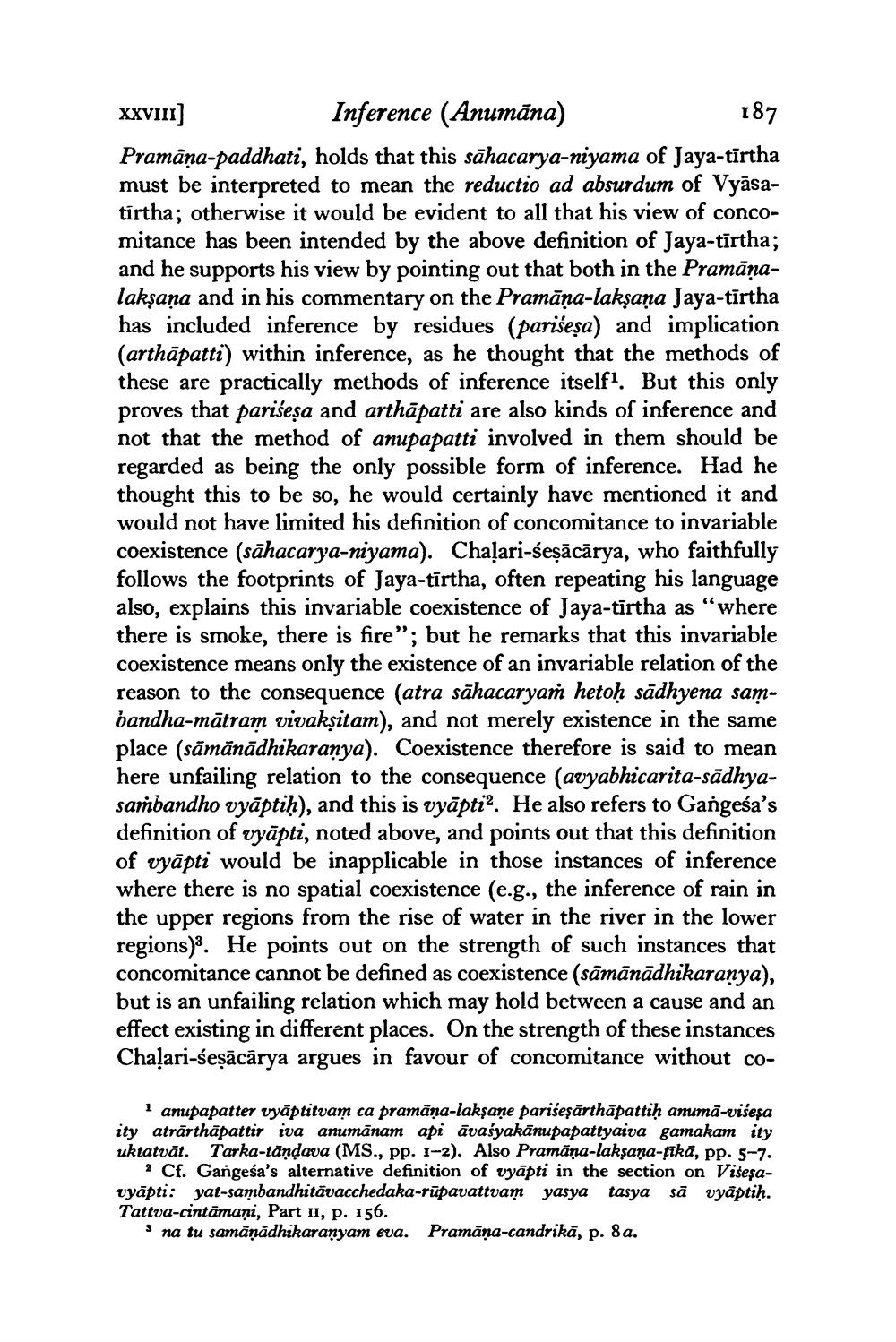________________
XXVIII) Inference (Anumāna)
187 Pramāņa-paddhati, holds that this sāhacarya-niyama of Jaya-tīrtha must be interpreted to mean the reductio ad absurdum of Vyāsatirtha; otherwise it would be evident to all that his view of concomitance has been intended by the above definition of Jaya-tīrtha; and he supports his view by pointing out that both in the Pramāņalaksana and in his commentary on the Pramāna-laksaņa Jaya-tīrtha has included inference by residues (parišeșa) and implication (arthāpatti) within inference, as he thought that the methods of these are practically methods of inference itself. But this only proves that pariseșa and arthāpatti are also kinds of inference and not that the method of anupapatti involved in them should be regarded as being the only possible form of inference. Had he thought this to be so, he would certainly have mentioned it and would not have limited his definition of concomitance to invariable coexistence (sāhacarya-niyama). Chalari-seşācārya, who faithfully follows the footprints of Jaya-tīrtha, often repeating his language also, explains this invariable coexistence of Jaya-tīrtha as "where there is smoke, there is fire”; but he remarks that this invariable coexistence means only the existence of an invariable relation of the reason to the consequence (atra sāhacaryaṁ hetoḥ sādhyena sambandha-mātram vivaksitam), and not merely existence in the same place (sāmānādhikaranya). Coexistence therefore is said to mean here unfailing relation to the consequence (avyabhicarita-sādhyasambandho vyāptiḥ), and this is vyāptia. He also refers to Gangeśa's definition of vyāpti, noted above, and points out that this definition of vyāpti would be inapplicable in those instances of inference where there is no spatial coexistence (e.g., the inference of rain in the upper regions from the rise of water in the river in the lower regions). He points out on the strength of such instances that concomitance cannot be defined as coexistence (sāmānādhikaranya), but is an unfailing relation which may hold between a cause and an effect existing in different places. On the strength of these instances Chalari-seşācārya argues in favour of concomitance without co
anupapatter vyāptitvam ca pramāna-lakşane pariseşārthāpattiḥ anumā-visesa ity atrārthāpattir iva anumanam api āvaśyakānupapattyaiva gamakam ity uktatvāt. Tarka-tandava (MS., pp. 1-2). Also Pramāņa-laksana-sīkā, pp. 5-7.
Cf. Gangesa's alternative definition of vyāpti in the section on Visesavyāpti: yat-sambandhitāvacchedaka-rūpavattvam yasya tasya sa vyāptih. Tattva-cintämani, Part II, p. 156.
i na tu samāņādhikaranyam eva. Pramāņa-candrikā, p. 8a.




